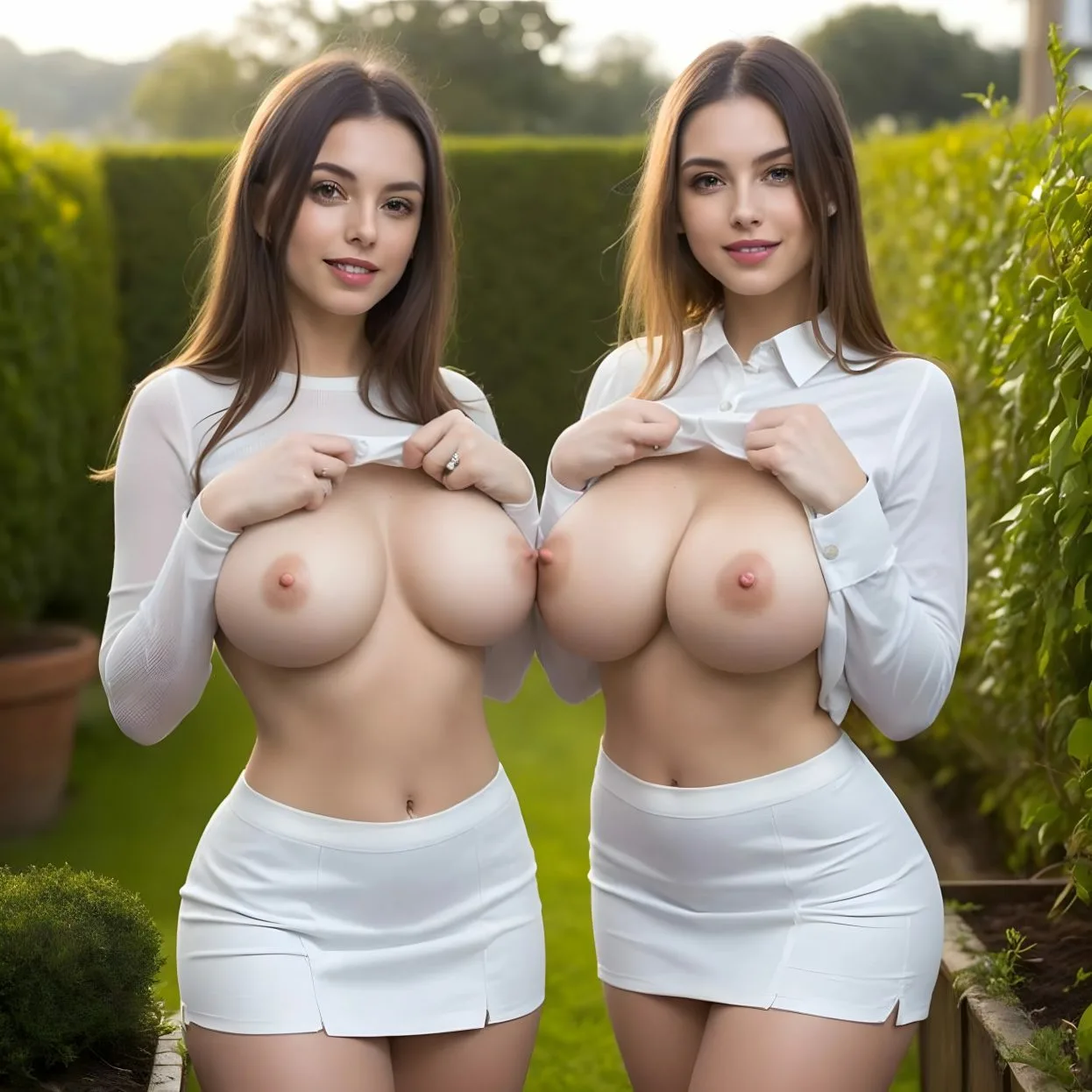AI Amateur Wife Porn Generator Images

Generate AI Content for Free
Explore AI-powered content generation tools with free access to unique experiences. Create personalized results effortlessly using cutting-edge technology.
TRY FOR FREESoft lighting. A familiar kitchen. A woman in a tank top doing dishes while glancing over her shoulder—candid, casual, intimate. The image might look like a snapshot from someone’s phone, but it isn’t. It’s entirely generated by artificial intelligence. From Reddit threads to private Discords, these “AI amateur wife porn” images are spreading faster than any platform can catch them. What started as NSFW dabbling with AI models like Stable Diffusion has grown into a full-blown subculture.
Unlike the high-polished, hyper-sexualized aesthetics of mainstream porn, this genre banks on realism. It mimics “home videos,” feeds off the ordinary—wives caught in unguarded moments, framed like secret memories. There’s a deliberate messiness to it: mismatched socks, unmade beds, bad angles. That’s the point. Users—largely anonymous—are after the sense that these images could be real, even if they know they’re not.
Blurred boundaries are what make it alluring. But they’re also what make it dangerous.
How This Trend Gained Ground In Digital Adult Spaces
When AI image generation hit the public in a big way, the adult content scene latched on almost instantly. Tools originally built for art or advertising got forked, re-coded, and re-trained to create explicit material. Stable Diffusion and other open models made it easy: no watermarking, no logins, no permission needed. Suddenly, anyone with a graphics card could whip up “porn that looks real enough to believe.”
“AI amateur wife porn” takes this a step further. It builds on aesthetics of authenticity: daylight selfies, awkward angles, lived-in backgrounds. Unlike deepfakes targeting celebrities, these images don’t need to impersonate someone famous. They just need to feel like someone real. Some even get trained on ordinary candid shots scrapped from social media—bulldozing over personal privacy in the process.
The tipping point was when niche interests caught wind: from cuckold fetishists to nostalgia-driven users seeking “the wife you wish you had.” Replacing gloss with grit, it’s no longer about fantasy—it’s about simulating familiarity.
Who’s Fueling The Creation And Obsession
Scroll through certain subreddits or fringe Telegram groups and you’ll find a hidden ecosystem. Anonymous coders, prompt engineers, digital voyeurs. They’re not trading edited porn; they’re sharing code, image seeds, and prompt formulas worded like recipes. Requests like: “chubby wife wiping down the table in Sunday pajamas—natural light—no makeup.” The goal isn’t perfection. It’s believability.
Private Discord servers run like underground labs. Users test how far they can push both software and ethics. A disturbing number of these “realistic wife” renderings are shaped by stolen selfies, publicly scrapped pictures, or images found on “wife-sharing” forums without the woman’s knowledge. Once rendered, the results are indistinguishable from a spontaneous bedroom photo.
A big part of the obsession with these images stems from what some call the “realism fetish.” It’s not about seeing a body—it’s about seeing a moment. Users want sighs, glances, bad hair days. They want whispered eroticism, not shouted lust. And AI delivers it, pixel by pixel.
Interest in this niche often comes from users bored with cartoonish, overdone porn. Instead, they crave:
- The tension of voyeurism without being caught
- The illusion of emotional connection
- The feeling that this could be someone’s actual life
This kind of intimacy plays directly into emotional projection, especially for users browsing alone late at night—looking not just for sex, but for a sense of closeness without the complications of reality.
Prompt Engineering: The Art Of Making It Feel Real
Getting AI to spit out a believable “wife moment” is more complex than it sounds. These images aren’t just typed into existence—they’re finely tuned through stacked prompts, re-renders, and photo-style adjustments.
A common formula looks more like a script than a keyword list. For example:
| Prompt Element | Example Input |
|---|---|
| Scene Setup | “In-home kitchen with natural daylight, 3pm lighting” |
| Subject Description | “30-something curvy brunette, wearing worn-out tank top and shorts” |
| Pose/Action | “Washing dishes while back slightly arched, subtle eye contact with camera” |
| Style/Texture | “Grainy realism, light skin blemishes, slightly messy hair” |
What users really want is imperfection—reflections in mirrors, clutter on countertops, wrinkles in clothes. These details take layers of prompts and iteration to get right. Prompt layering helps AI mimic not just how an amateur wife looks—but how her world feels.
Even captions can play a role, like requesting “text overlay” that mimics a homemade video or security cam feed. The goal is crafting a believable scene, not just a sexy body.
The Workarounds That Break The Rules
Of course, not all image generators want to go there. Many platforms set up safeguards to prevent explicit material. But then come the loopholes.
Users bypass these filters by:
- Using euphemisms like “mature themes” or slang terms in foreign languages
- Splitting prompts to trick moderation algorithms (e.g., “topless” becomes “without upper clothing”)
- Running local, self-hosted versions of open-source models with no filter limits
It becomes like a game of digital cat and mouse. As platforms backfill safety nets, coders poke at weak spots. Some even train their own modified checkpoints—models personalized to their fetishes. These private models can recreate specific women based on minimal reference photos. The tech’s improving. The filters? Not so much.
Where Consent Gets Murky—Or Vanishes
A lot of this tech is powered by datasets that weren’t built ethically to begin with. Most users don’t know—or care—where the training images came from. But many open-source AI models are fed scraps of scraped data: public Facebook albums, Pinterest boards, or old photobucket files.
This raises hard questions:
- Was that woman aware her profile picture could inspire an explicit image?
- Did she ever share those images wanting to be copied, traced, edited—and sexualized?
Hidden consent violations run deep here. Not only in the code but in the culture. Pixel by pixel, likenesses are exploited. And when someone recognizes their face in one of these AI fakes, there’s almost no recourse.
The consent wasn’t just missing—it was never part of the equation in the first place.
Why “Wife-Like” Shots Hit Harder Emotionally
What hits viewers isn’t just nudity. It’s the feeling of familiarity. Like a torn-out page from someone’s diary. These AI-crafted images blur something deeper—they make imagination feel like evidence.
A photo of a woman straddling a couch in cheap leggings and faded bra isn’t hypersexual. It’s haunting. She looks tired. The room looks lived-in. And for certain consumers, that level of humanity makes it more desirable—because it feels earned, not posed.
There’s a built-in emotional residue:
- Nostalgia for past relationships
- Secret fantasies of being chosen, loved, looked at like that
- Silent jealousy towards what seems like an “average” but intimate life
Each image plants a fantasy: not of wild sex—but of closeness, access, control.
What It Reflects Back On Love, Sex, And Power
Over time, consuming engineered “wife porn” isn’t just harmless escapism. It reshapes how some users approach relationships in real life.
It fuels illusions like:
- Literal ownership over a partner’s image
- Expectations of perfect availability and aesthetic messiness
- Assuming emotional closeness without emotional labor
This genre is seductive because it strokes both ego and loneliness. Watching a fantasy wife laugh in sweatpants while pouring orange juice isn’t hot because she looks like a model—it’s hot because she looks like she already belongs to you.
Except she doesn’t. She was never real. And that missing piece is what makes it both powerful and deeply unsettling.
Inside the Prompt-Sharing Networks
It’s not just a few guys messing around with image apps. There’s a whole structure behind how these AI-generated “amateur wife” images get circulated. Platforms range from private Discord channels to encrypted Telegram groups, some operating like secret societies with invite codes, rotating links, and underground vetting. 4chan threads pop up and vanish, but not before dumping gigabytes of prompts, model IDs, and sample generations that spread like wildfire.
The language is coded. What looks like weird inside jokes or emoji spam is actually a formula. Take “wife codes”: shorthand used in prompts to generate wives that look “real but attainable”—the PTA mom, the casual yoga-stretcher, the woman brushing her teeth in low light. Add “visual slang” like certain lighting requests or background cues (“laundry basket in frame,” “baby monitor on nightstand”) and it’s clear there’s a disturbing level of craft here. They’re not just making porn—they’re designing fictions that feel like your neighbor’s accidentally leaked album.
Prompt “recipes” are traded like underground cookbooks. People don’t just want erotic images—they want genre: messy bun, post-workout sweat, wedding ring still on. And the strokes of realism only make it murkier when someone uses a real face to build from.
Real People, Fake Photos: Deepfake Parallels
It starts with a face—often pulled from Instagram, Facebook, or even low-res school staff photos. That’s all it takes. Once someone uploads two or three pictures into the right AI model and layers in the prompt magic, the machine can spin out dozens of images in minutes. Most of these women have no idea their smiles or candid group shots have been twisted into sex content shared in private circles.
Deepfake and AI porn merge here, blurring lines between erotic fantasy and stolen identity. And inside these threads, it doesn’t read like a violation—it’s brushed off as “art,” or even “freedom of expression.” There’s talk about creative rights, aesthetic value, digital musehood—as if stripping consent away is just a creative shortcut. Objectification gets camouflaged as intimacy, and no one inside these circles is asking who gets hurt.
When You’re the Wife They Faked
Stephanie never posted anything inappropriate. A few selfies at the beach, some family shots, and a public profile pic from three job changes ago. That photo became AI training fuel. She didn’t even know about it until a friend’s husband recognized her face in a porn thread labeled “local wives.” One of the renders was her exact smile—warped onto a graphic pose she had never even imagined for herself.
She wasn’t the only one. Across Reddit, there are stories creeping out—women finding AI-generated nudes of themselves circulating in spaces they’ve never entered. Some had been posted on imageboards, others traded in direct messages or invite-only channels. False intimacy becomes forced humiliation. It’s emotional whiplash: part confusion, part violation, all permanent. Once it’s out there, it’s copied, refiltered, corrupted further. And every image multiplies a breach of safety you didn’t even know you needed to protect.
The Grey Legal Zone
In most places, if someone shares your nudes without permission, that’s grounds for revenge porn claims. But when the image was never “real,” and there’s no camera, no photo session, no actual nudity—just an AI engine and a string of descriptive words—that’s where it all gets messy legally.
Deepfake laws try to catch up, but generative art plays on harder mode. Some jurisdictions only cover likeness in video, skipping over still images. Others require proof of harmful intent, which is hard to show when it’s shared in a Telegram group with no names. Loopholes are built in by design. And by the time regulation recognizes a new AI art form, there’s already a faster, smarter way to recreate what it tried to ban. These women aren’t just on the margins of law—they’re outside its current language entirely.
Moderation Tech Can’t Keep Up
The fastest AI systems aren’t the ones catching bad content—they’re the ones making it. By the time moderators flag something questionable, five new versions spill out. Most platforms use reactive moderation, flagging keywords or matching image patterns. But AI-porn users get creative. They tweak prompts slightly, swap models, or talk in coded slang to dodge filters.
It’s an arms race, and the tools built to enforce rules are stuck playing catch-up while open-source tools get more powerful every week. The platforms banning AI porn? They just get cloned into private forks and resurface on smaller, anonymous sites that don’t even pretend to moderate.
The Illusion of Safety in “Private” Creations
Plenty of users say, “I never shared it. It was just for me.” But that argument collapses fast. These images—erotic, realistic, intimate—aren’t harmless just because they’re locked behind someone’s screen. Most of the time, they don’t stay there.
One person posts a sample in a private thread. Another leaks it into a chat group. Then someone re-trains a model on those images, and suddenly, they’re everywhere. This notion of “for my eyes only” feels comforting—until a woman’s AI-morphed nude ends up on page 3 of a search result she never consented to. Digital art has a leakage problem. And in these circles, privacy is treated like optional packaging: protective, but never permanent.
Best Free AI Tools







